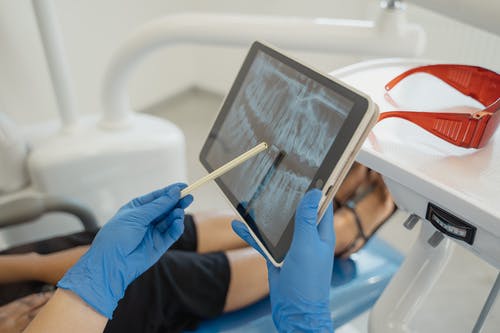
Recognizing the Many Forms of Dentures
For adults, the loss of teeth is a frequent health issue that can be scary and humiliating. Modifications to your eating habits or speech patterns, as well as the way you smile, might be caused by the loss of permanent teeth. Dentures are a blessing, and other prosthetics for your teeth that last longer are available to assist people who suffer from tooth loss.
When they imagine dentures, many imagine a tray of artificial teeth, maybe in a glass filled with cleaner. Dentures, however, come in different styles to meet the demands of each patient. Dental implants are artificial teeth designed to fit the individual’s gum line and the bite.
Kinds of Dentures
The form of dentures you receive is often determined by various factors, including the number of natural teeth missing and the condition of your jawbone and surrounding tissues. The following is a list of the different kinds of dentures used in modern dentistry.
1. Full Dentures
All top teeth, lower teeth, or both sets of teeth can be substituted with dentures. Full dentures encompass not only traditional removable dentures but also custom-made, quick ones that are supported by implants. Full dentures are only as effective as the material they are created from and how they fit in the mouth of the patient.
Crowns, on the other hand, protect teeth while also enhancing their beauty. It can be utilized in place of the missing tooth structure when there isn’t enough of the tooth remaining to cover and support the filling. Because of this, tooth coloured dental crowns can be used to fix a broken tooth, anchor a bridge, or strengthen a tooth that has become weak over time.
2. Immediate Dentures
The quick replacement of missing teeth following teeth extraction is feasible through immediate dentures. With these dentures, patients won’t need to worry about leaving the office without missing teeth. Most of the time, they are merely temporary. As patients wait for permanent dentures to be made and fitted, they can usually utilize immediate dentures for eating and talking.
3. Implant-Supported Dentures
Dentures are typically made to fit over the gums and held to the gums using dental glue. But, this method of denture placing is not sufficient protection for certain patients. Fixing their dentures onto implants could make them more comfortable with their dentures. Implant-supported dentures are attached to titanium screws that are placed into the jaw. These screws secure the dentures and reduce their ability to move around during everyday use.
Modern tooth replacement options include dental implant surgery. Implants can replace a single tooth or an entire arch of teeth. Denture wearers looking to improve the quality of their prostheses can also get assistance there.
4. Partial Dentures
Dentures can replace as little as three consecutive missing teeth and are not limited to wide versions. They are made to replace all teeth of the upper and lower jaw. If a patient has front teeth, partial dental implants can replace both jaws’ posterior teeth.
They can fit over the gums in the same way that full dentures do. Dental plastic gum-colored or metal can be used to join them in the mouth’s rear, which conceals the tooth behind the front teeth. Regarding ease of use and stability, these removable partials are similar to an orthodontic retention device.
5. Custom Cosmetic Dentures
You should consider investing in custom cosmetic dentures to debunk some of the misconceptions about dentures. They are constructed using individual fake teeth to create these dentures, and their color and appearance are similar to natural teeth. Although the initial cost for custom cosmetic dental dentures can be more costly than others, most patients choose them because of the natural-looking outcomes.
If you’re looking for the services of a dentist in Monmouth County, you can search the web for a list of the most trusted dentists in the said area. You can check on their reviews before booking an appointment.


